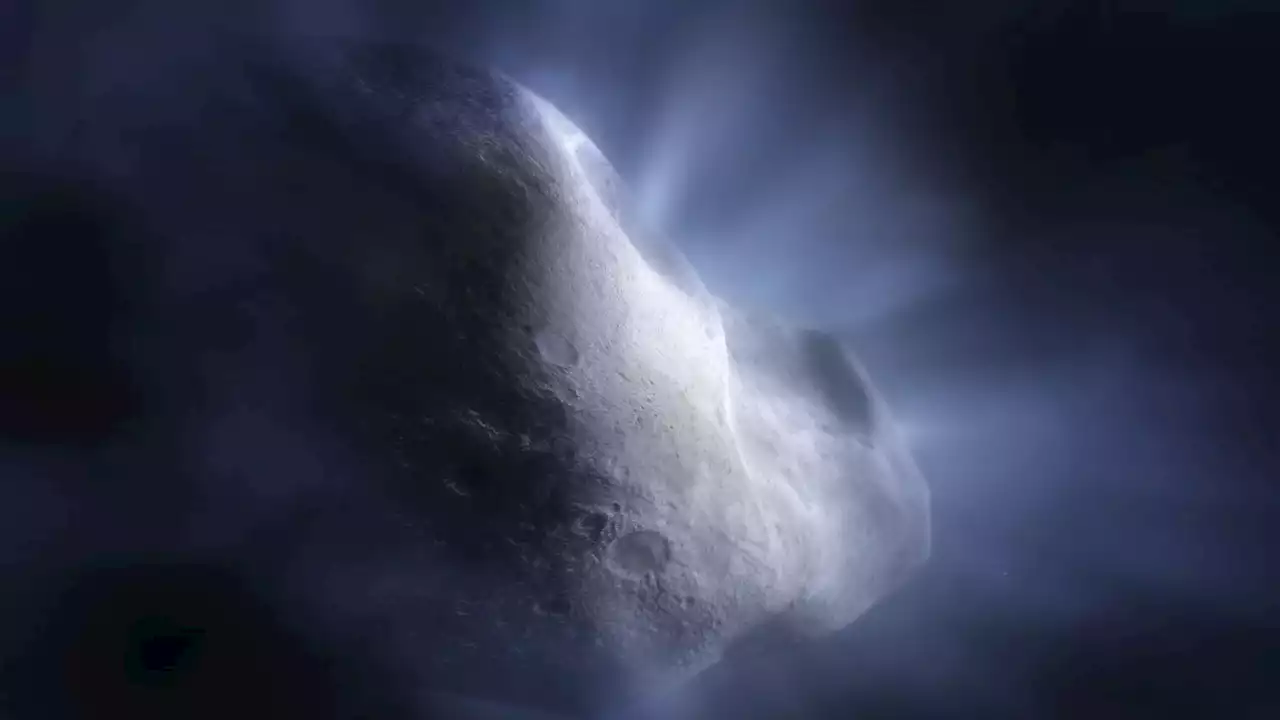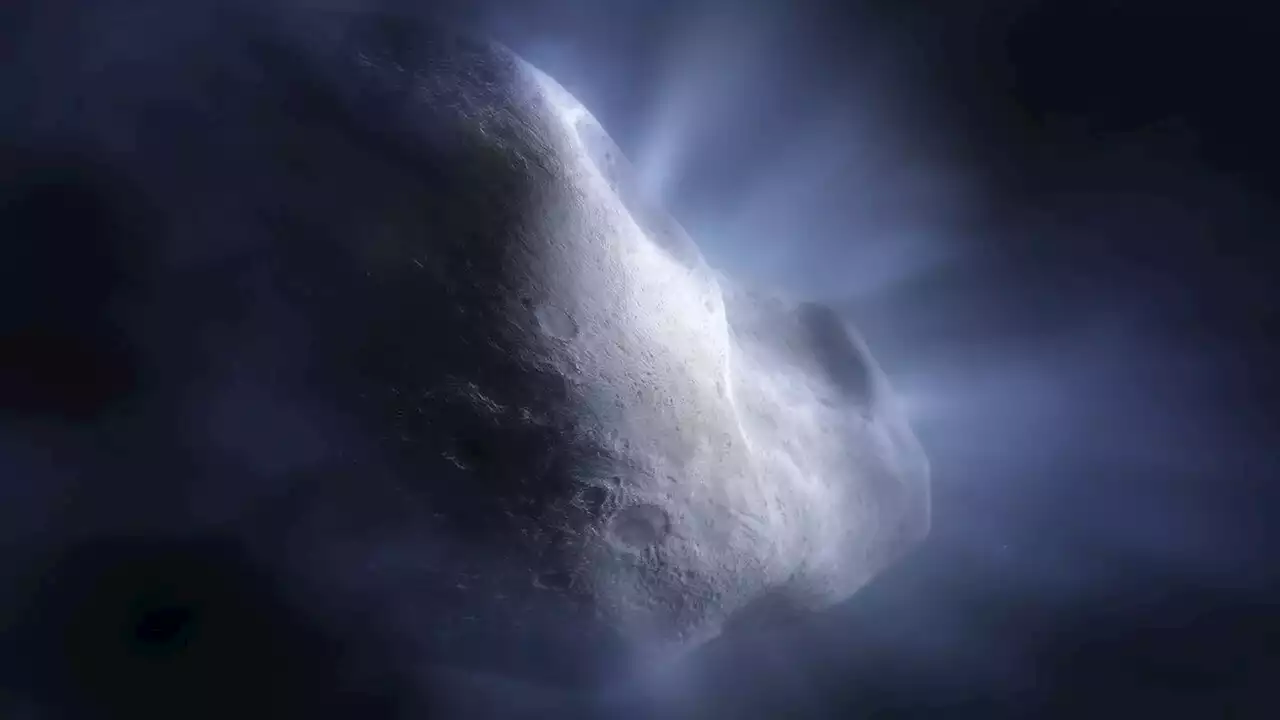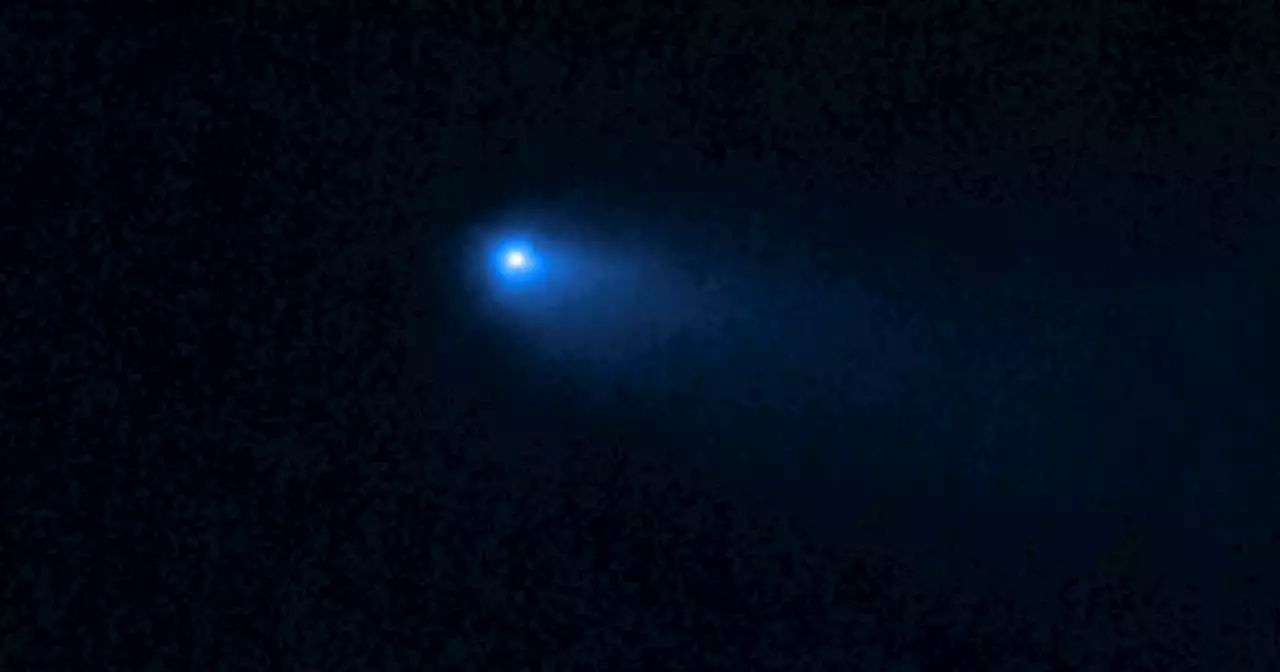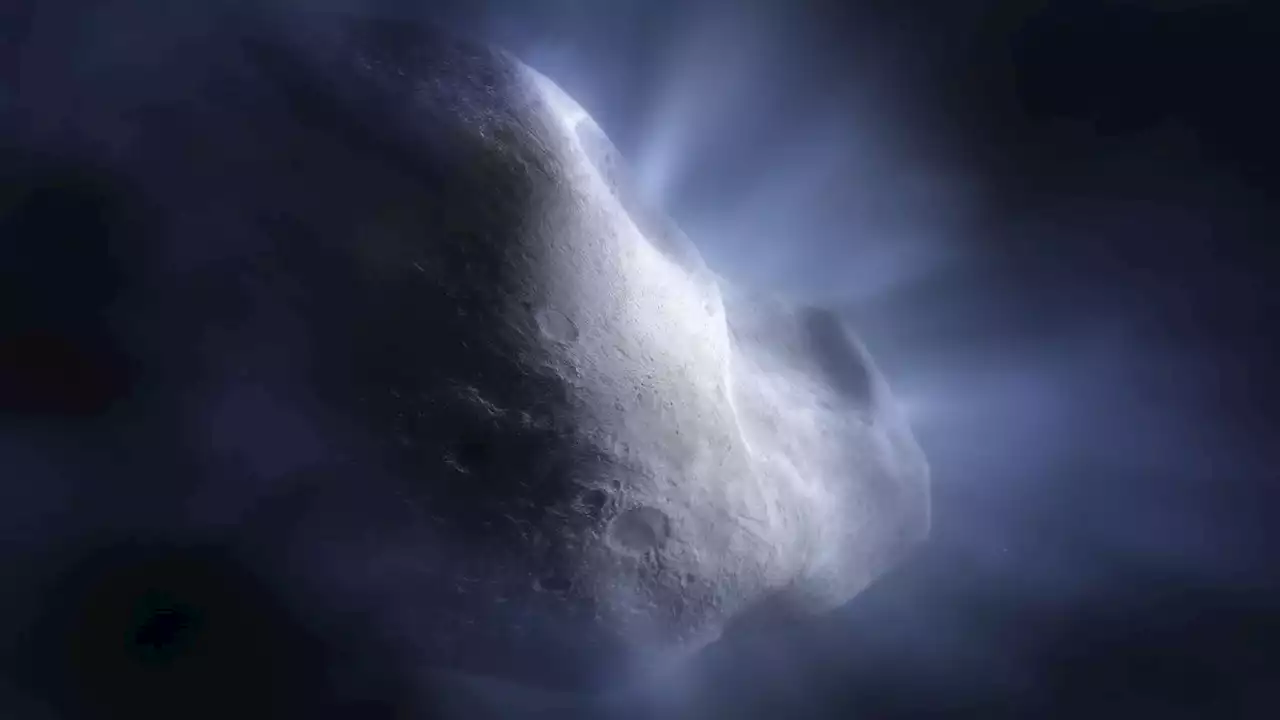A new analysis of a comet in the asteroid belt reveals frozen water from the early solar system, hinting at the origins of water on Earth.
NASA's James Webb Space Telescope is probably best known for peering deep into the early cosmos, searching for the universe's oldest stars. But it's also making amazing discoveries right in our own cosmic backyard.
Dubbed Comet Read, the object is surrounded by a haze of gas and dust called a halo. When the JWST analyzed this halo using a specialized near-infrared instrument that detects heat, it found that the gas was composed largely of water vapor, implying that the comet's heart likely contains frozen water from the early solar system, potentially originating 4.5 billion years ago. But weirdly, the halo contained virtually no carbon dioxide, a major ingredient in most known comets.
Comet Read's missing carbon dioxide, however, presents a bigger mystery. It could be that Read, for some reason, simply formed without any CO2. Or it's possible that it had carbon dioxide early in its life but that the volatile compound burned away over time due to the sun's heat. —The James Webb Telescope detected the coldest ice in the known universe – and it contains the building blocks of life"Being in the asteroid belt for a long time could do it — carbon dioxide vaporizes more easily than water ice, and could percolate out over billions of years," Michael Kelley , an astronomer at the University of Maryland and lead author of the study, said in a statement .
México Últimas Noticias, México Titulares
Similar News:También puedes leer noticias similares a ésta que hemos recopilado de otras fuentes de noticias.
Webb telescope's latest discovery could show how water arrived on EarthScientists announced Monday that Webb spotted water vapor around a comet in the main asteroid belt, which suggests ice from the early solar system can be preserved in this region between Mars and Jupiter.
Leer más »
![]() Webb Finds Water in Rare Main-Belt Comet, Spurring New MysteriesA team of scientists have used the James Webb Space Telescope to locate water vapor around a main-belt comet for the first time.
Webb Finds Water in Rare Main-Belt Comet, Spurring New MysteriesA team of scientists have used the James Webb Space Telescope to locate water vapor around a main-belt comet for the first time.
Leer más »
 James Webb Space Telescope discovers water around a mysterious cometThe study of Comet 238P/Read, which lurks in the main asteroid belt, could help reveal the source of Earth's water, a vital ingredient for life on our planet.
James Webb Space Telescope discovers water around a mysterious cometThe study of Comet 238P/Read, which lurks in the main asteroid belt, could help reveal the source of Earth's water, a vital ingredient for life on our planet.
Leer más »
 James Webb telescope finds water around a comet in the main asteroid belt | EngadgetThe James Webb telescope has spotted the first known instance of a comet with water vapor in the main asteroid belt..
James Webb telescope finds water around a comet in the main asteroid belt | EngadgetThe James Webb telescope has spotted the first known instance of a comet with water vapor in the main asteroid belt..
Leer más »
 In historic first, James Webb detects water surrounding a rare cometThe new observations of Comet 238P/Read provide further evidence that Earth's water was delivered by ancient space rocks.
In historic first, James Webb detects water surrounding a rare cometThe new observations of Comet 238P/Read provide further evidence that Earth's water was delivered by ancient space rocks.
Leer más »
 James Webb Space Telescope finds water and 'surprise' discovery on rare cometResearchers using the James Webb Space Telescope have spotted water around a rare comet, calling it a 'long-sought scientific breakthrough.'
James Webb Space Telescope finds water and 'surprise' discovery on rare cometResearchers using the James Webb Space Telescope have spotted water around a rare comet, calling it a 'long-sought scientific breakthrough.'
Leer más »
